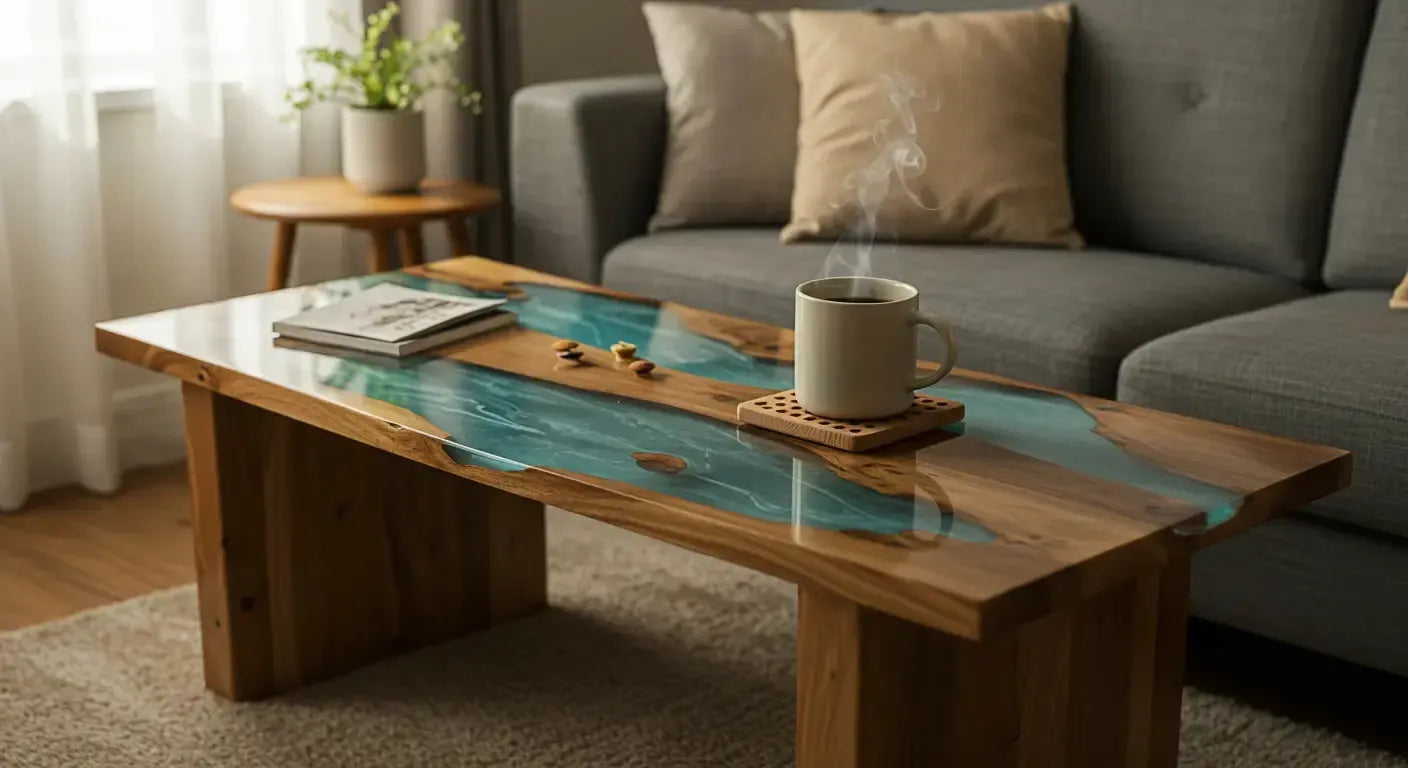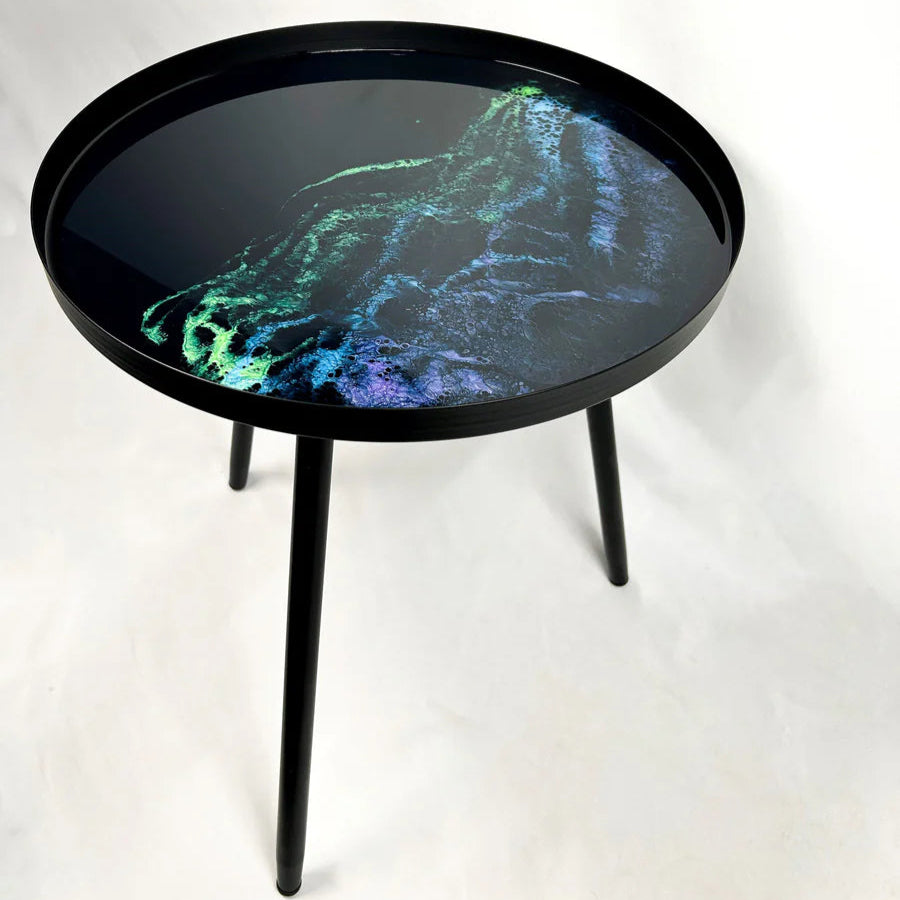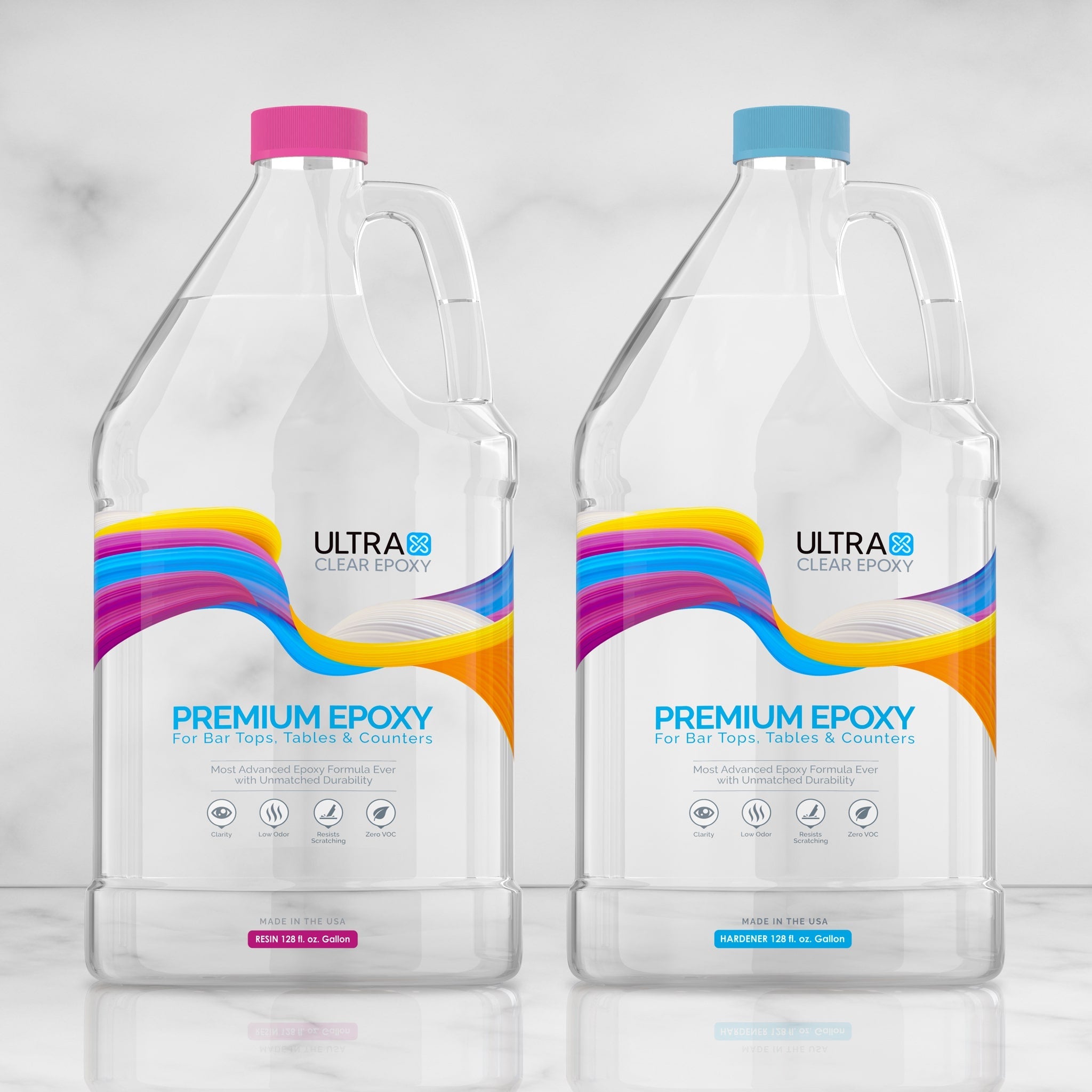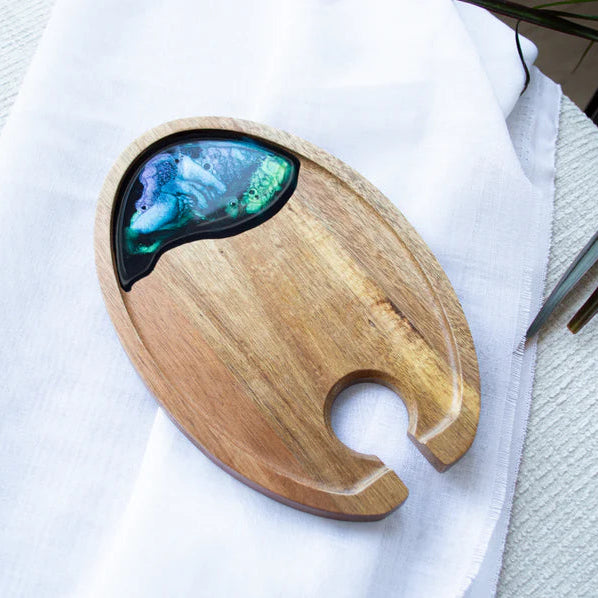If you’ve got a beautiful epoxy resin table, the last thing you want is to ruin it with a hot mug or fresh-from-the-oven dish. I get this question all the time: can resin tables withstand heat? And the answer is… yes, but with limits. Let’s break down what I’ve learned after years of building, testing, and using resin tables in real homes.

Understanding the Heat Resistance of Resin Tables
Epoxy resin is durable — but it does have a melting point
Despite its rock-hard finish, resin is still a type of plastic. And like most plastics, it softens when exposed to high temperatures.
Most standard tabletop epoxy can handle up to 120–150°F (49–65°C)
That covers things like warm plates, coffee cups, or even the occasional pizza box. But go much hotter than that, and you’re rolling the dice.
Beyond that, you risk heat rings, clouding, or softening
Even heat-resistant epoxy will show signs of wear if it's exposed to extreme heat—especially over time or in the same spot repeatedly.
What Happens When You Put Hot Items on Epoxy?
Direct heat can leave surface marks or permanent damage
If you set a cast iron pan or boiling pot directly on your table, you might see clouding, white rings, or even surface indentations.
Heat exposure over time can dull the finish
Even without direct contact, placing warm items on the same area over and over can wear down that glossy look.
Some resins react differently — not all are created equal
This is where resin table heat resistance really comes down to the product. Some high-end epoxies are formulated for better thermal resistance, but many DIY kits aren’t designed for high temps.
Real-World Use: Coffee Cups, Plates, and Hot Pans
Warm coffee mugs? Usually fine
I use mine daily for coffee without issue. But I always place the mug gently, and I don’t let it sit there for hours.
Fresh-from-the-oven pans? Not a good idea
This is where people get into trouble. Even if the epoxy doesn't melt, the finish might haze or bubble. Resin tables are not heatproof in that sense.
Trivets and heat pads are your best friend
They’re cheap insurance against permanent damage. I keep a few on every resin table I use or sell. I break this down more in how I clean my epoxy tabletops.

What I’ve Seen with My Own Builds
Matte finishes tend to show heat damage more than gloss
Matte epoxy hides fingerprints, but it also tends to reveal heat spots faster. Glossy finishes are slightly more forgiving.
I once tested a heat gun on scrap resin — here’s what happened
At around 160°F, it started to soften. At 180°F, it clouded and warped. Definitely not something I’d try on a finished table.
Some customers ask for heat-resistant resin blends — they exist, but they’re pricey
There are specialty heat-resistant epoxy formulas that hold up better (some rated to 400°F+), but they’re typically more expensive and less clear.
How to Protect Your Resin Table from Heat
Use trivets under hot dishes
This one’s simple. A small cork or silicone pad can save you hundreds in refinishing work.
Avoid placing heat-generating appliances directly on the surface
Things like air fryers, toasters, or espresso machines can radiate enough heat to cause surface fatigue over time. Also discussed in Are Epoxy Tables Durable?.
Add a protective glass top for daily use
If you’re using your resin table in a high-traffic kitchen or dining area, a thin glass overlay adds peace of mind without killing the look.

Can You Repair Heat Damage on Epoxy?
Minor white spots may buff out with polishing compound
If the heat mark is shallow, a light polish with resin-safe compound can restore the shine.
Deeper burns often require sanding and a new flood coat
Unfortunately, once the resin has actually warped or burned, you’re looking at resurfacing the whole piece. I walk through this in How I Repaired My Epoxy Table.
Prevention is easier (and cheaper) than repair
Trust me—protecting your surface with basic habits is way easier than sanding and pouring again.

Final Thoughts: Can Resin Handle Heat?
It can take some heat — but not all heat
Resin tables can absolutely handle warm dishes and daily use, but they’re not built for extreme temperatures or careless handling.
Think of epoxy like fine furniture, not industrial metal
It’s strong, but not invincible. Treat it with care, and it’ll keep looking great for years.
Protect it, and it’ll last for years
Use coasters. Use trivets. Avoid direct heat. That’s the real secret to resin table heat resistance.
Thanks for taking the time to read—I really appreciate it. I hope something in my process (or my mistakes) helps you along the way. If you want a custom piece or hit a wall building your own, feel free to drop a comment or reach out—happy to help. Have a blessed day!







Share: